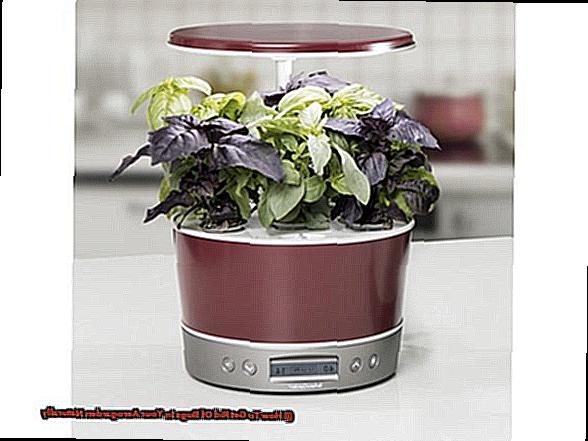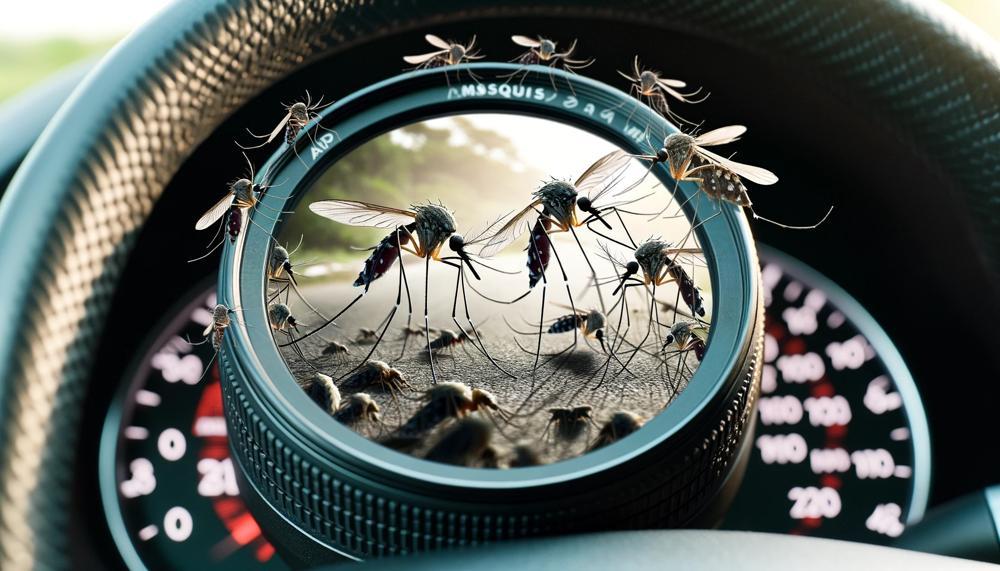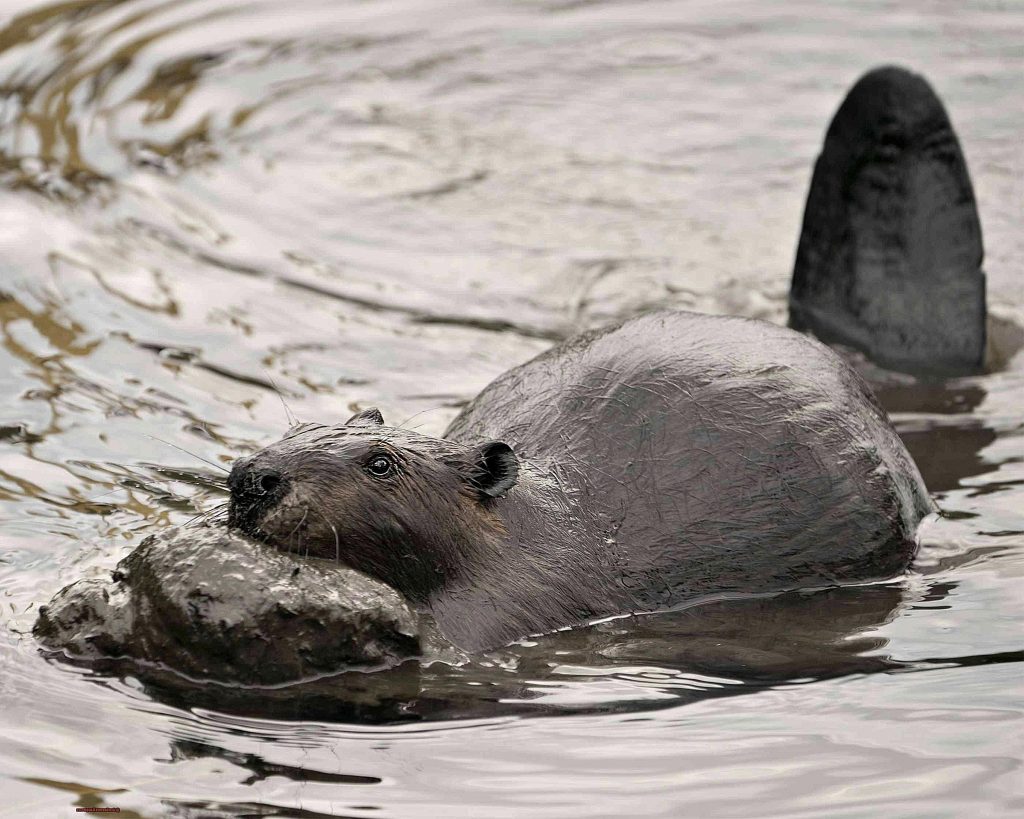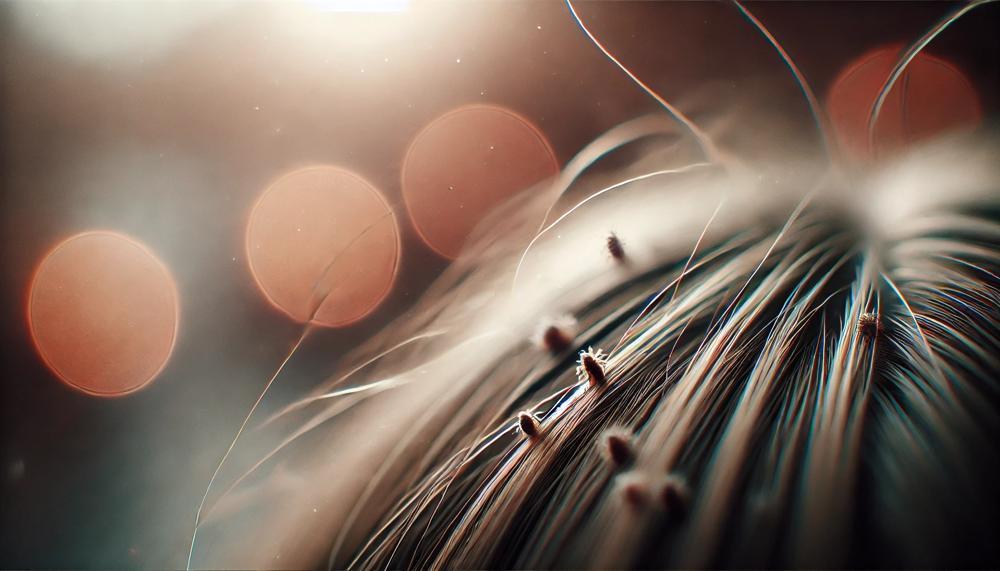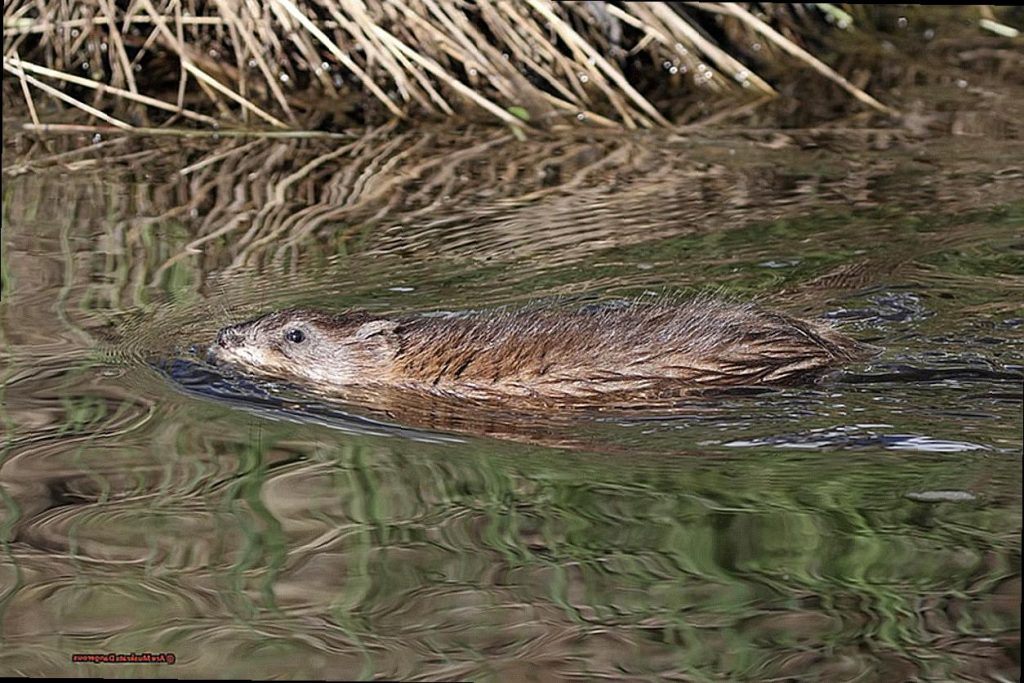Are you tired of battling pesky bugs in your aerogarden? Don’t fret, you’re not alone. Many gardeners struggle with keeping their plants bug-free, especially when using indoor gardening systems like aerogardens. But before you resort to harsh chemicals and pesticides, why not try some natural methods for getting rid of bugs in your aerogarden? Not only are these methods safer for both you and the environment, but they can also be just as effective in eliminating those unwanted pests. In this blog post, we’ll explore a variety of easy and natural ways to keep your aerogarden bug-free, so you can enjoy healthy and thriving plants all year round. Here’s what we’ll cover:
- The benefits of using natural methods instead of chemical pesticides
- Common types of bugs that can infest an aerogarden
- Natural remedies such as essential oils, neem oil, and diatomaceous earth
- Tips for preventing future bug infestations in your aerogarden
Say goodbye to harmful chemicals and hello to a healthier and more sustainable approach to banishing bugs from your aerogarden. Let’s dive in.
Table of Contents
- 1 Understanding Bug Infestations in Your Aerogarden
- 2 Identifying Common Pests in Your Aerogarden
- 3 Natural Methods for Getting Rid of Bugs
- 4 Using Essential Oils for Pest Control
- 5 Maintaining Hygiene in Your Aerogarden
- 6 Natural Pest Control Products for Your Aerogarden
- 7 Prevention Techniques to Keep Bugs Away
- 8 Conclusion
Understanding Bug Infestations in Your Aerogarden
Bugs are a common problem that can plague the health of your aerogarden. These tiny creatures, such as aphids, spider mites, whiteflies, and fungus gnats, can cause immense damage to your plants by munching on their leaves, stems, and roots. In addition, they can spread diseases and hinder the growth of your precious plants.

| Bug | Indicators of Infestation | Recommended Solutions |
| — | — | — |
| Aphids | Clumped on new growth, sticky residue on leaves | Spray a mixture of water and dish soap, introduce ladybugs or lacewings |
| Spider Mites | Thin webs on leaves, yellow or brown spots | Utilize pyrethrin-based insecticidal spray, introduce predatory insects |
| Whiteflies | White flying bugs, sticky residue on leaves | Introduce predatory insects, use essential oils |
| Fungus Gnats | Small black flying bugs, larvae in soil | Remove affected plants and soil, maintain proper hygiene, use natural pest control products |
These pests can be a real nuisance for aerogarden enthusiasts. By keeping a close eye on your plants and implementing proper pest control measures, you can prevent these pesky creatures from wreaking havoc on your garden. However, if an infestation does occur, it’s important to act quickly and effectively to protect your plants.
For instance, aphids tend to congregate on new growth and leave behind a sticky residue on the leaves. To get rid of them, you can try spraying a mixture of water and dish soap on the affected areas. Alternatively, you can introduce ladybugs or lacewings into your garden as they are natural predators of aphids.
Spider mites are another common pest that can infest your aerogarden. They leave behind fine webs on the leaves and cause yellow or brown spots. To eliminate them, you can use an insecticidal spray that contains pyrethrin or introduce predatory insects that feed on spider mites.
Whiteflies, as their name suggests, are white flying insects that leave a sticky residue on leaves. They can be controlled by introducing predatory insects into your garden or using essential oils as a natural pest control method.
Finally, fungus gnats are tiny black flying insects that lay their larvae in the soil. To get rid of them, you can remove the affected plants and soil, maintain proper hygiene, and use natural pest control products.
Identifying Common Pests in Your Aerogarden
Aerogardens are a fantastic way to add a splash of greenery to your home, but unfortunately, they can also attract unwelcome pests. Some of the most common pests that may invade your aerogarden are aphids and spider mites. These pesky critters can enter your home through various means, such as open windows, clothing, or even on produce, flowers, or potted plants. Indicators of a pest infestation in your aerogarden include leaves turning yellow, stunted growth, and visible insects.
To identify pests in your aerogarden, it is essential to thoroughly inspect your plants using a magnifying glass. Aphids are small, pear-shaped insects that come in different colors like green, yellow, and brown. They tend to form clusters on the undersides of leaves and can be recognized by their mouthparts that suck juices from plants. On the other hand, spider mites are tiny eight-legged creatures that appear as minuscule dots on plant leaves. They can be red, brown, or yellow and often leave wispy webs on plants.
Effective Pest Management for Your Aerogarden
Frequent monitoring and early intervention are vital for keeping your aerogarden free from pests. There are several methods for controlling pest infestations in aerogardens, including using natural bug repellents and creating a gentle insecticidal soap spray at home. These methods are not only safe for your plants but also for the environment.
One example is introducing predatory insects like ladybugs or lacewings to your aerogarden to help keep pest populations in check. These insects feed on aphids and other small pests, effectively controlling their numbers. You can also make a gentle insecticidal soap spray by mixing one tablespoon of liquid dish soap with one liter of water and spraying it on affected plants.
Handling Persistent Pests
Some pests, like spider mites, can be challenging to eradicate and may require the use of a pyrethrin-based insecticidal spray. This natural insecticide is derived from chrysanthemum flowers and is known to be effective against spider mites. However, it is crucial to follow the instructions carefully and avoid using it too frequently, as it can harm beneficial insects.
Being able to identify common pests in your aerogarden and taking necessary steps to manage them is crucial for maintaining a healthy and flourishing indoor garden.
Natural Methods for Getting Rid of Bugs
One of the best ways to eliminate bugs from your aerogarden is by utilizing natural methods. These techniques include introducing beneficial insects, using natural repellents, maintaining proper hygiene, incorporating companion plants, and creating homemade bug traps.
Not only are these methods effective at getting rid of bugs, but they are also safe for both your plants and your health, as well as for the environment.
For instance, introducing beneficial insects into your aerogarden is a great way to control bug populations. Ladybugs, lacewings, and praying mantises are all examples of beneficial insects that can help keep pests at bay. These insects prey on common garden pests like aphids, spider mites, and thrips, making them a natural and environmentally friendly solution to bug infestations.
Another effective method is using natural repellents to keep bugs away from your aerogarden. Essential oils such as peppermint, neem oil, and citronella are all known to repel insects. Simply dilute these oils with water and spray them onto your plants to keep bugs at bay. Not only will this help get rid of existing bugs, but it will also prevent future infestations.
Maintaining proper hygiene in your aerogarden is also crucial in keeping bugs at bay. Regularly removing dead leaves and debris from your plants can prevent bugs from making themselves at home in your garden. Additionally, incorporating companion plants such as marigolds can help repel bugs from your aerogarden.
Finally, creating homemade bug traps can be an effective way to catch and eliminate pesky bugs. For example, a mixture of apple cider vinegar and dish soap can attract and trap fruit flies. This natural trap is safe for your plants and does not use harmful chemicals.
Using Essential Oils for Pest Control
A variety of essential oils have proven to be effective in controlling pests in an aerogarden. These oils include peppermint, lemongrass, lavender, thyme, cedarwood, sandalwood, and rosemary. Applying these oils is a simple process – mix them with water and use a watering can or spray bottle. Not only are these oils natural, but they are also safe and environmentally friendly, making them an ideal method for repelling bugs such as ants, wasps, flies, cutworms, ticks, snails, aphids, and other harmful pests that can damage your aerogarden plants.
When it comes to using essential oils for pest control, peppermint is a top choice. Its strong scent acts as a natural deterrent for many insects. Lemongrass also has a strong aroma that repels pests while adding a pleasant citrus scent to your garden. Lavender is known for its calming properties and can help keep insects at bay. Thyme is another potent oil that can effectively repel bugs.
Cedarwood has been used for centuries as a natural insect repellent due to its high concentration of cedrol, which has powerful pest control properties. Sandalwood has a similar effect and can also add a lovely woody aroma to your garden. Rosemary is another popular choice for pest control as it contains compounds that are toxic to many insects.
To use these essential oils in your aerogarden, simply mix a few drops with water and apply using a watering can or spray bottle. You can also soak cotton balls in the oil and place them near plants to create an extra barrier against pests. With these natural and safe methods, you can protect your precious garden from harmful pests without the use of chemicals or harmful ingredients.
Maintaining Hygiene in Your Aerogarden
Ensuring the cleanliness and pest-free environment of your aerogarden is vital for the optimal growth of your plants. Below are some helpful tips to help you maintain hygiene in your aerogarden:
- Regular Cleaning: It is crucial to regularly clean your aerogarden to support the healthy development of your plants. If roots grow into the filter, it can lead to clogging, hindering water circulation and nutrient absorption, resulting in stunted or weak plants. To clean your aerogarden, unplug the unit, remove plants and deck, and rinse the reservoir with water.
- Sanitizing: After rinsing with water, use a cleaning solution like bleach or vinegar to sanitize the interior of your aerogarden. This will effectively eliminate any bacteria or algae buildup. Rinse all components three times to ensure there are no traces of bleach or vinegar.
- Wipe Down: Use a clean cloth or towel to wipe down all components of your aerogarden after cleaning and sanitizing. This will guarantee that no dirt or residue is left behind.
- Stubborn Stains: In case of stubborn stains or mineral buildup on the grow deck edges, you can use vinegar or CLR to effectively remove them.
- Prevent Algae Growth: Algae growth can be prevented by covering any unused holes with plant spacers and keeping the water level below the fill line. This will also help maintain a hygienic environment for your plants.
- Regular Water Changes: To prevent bacteria buildup, it is recommended to replace the water in your aerogarden every 4-6 weeks. This will also ensure that your plants receive a fresh supply of nutrients.
- Cleaning Between Plantings: Make sure to clean your aerogarden between plantings to remove any leftover debris or residue that can attract pests.
- Mid-Growing Cycle Cleaning: If you notice any signs of pests or algae growth during the mid-growing cycle, it is essential to clean your aerogarden immediately to prevent any damage to your plants.
- Use Sanitizing Agents: For sanitizing your aerogarden, you can use either bleach or vinegar, but plain water alone can also be effective if desired.
Natural Pest Control Products for Your Aerogarden
When it comes to keeping your aerogarden bug-free, there are plenty of natural pest control products to choose from. From neem oil to diatomaceous earth, garlic spray to essential oils, insecticidal soap to companion planting, these options can effectively eliminate any pesky insects that may try to invade your plants.
One of the most popular natural pest control products is neem oil. This oil comes from the neem tree and has been used for centuries in traditional medicine and agriculture. It works by disrupting the insect’s hormonal balance, making it difficult for them to lay eggs and reproduce. Neem oil is also known for its anti-fungal and antibacterial properties, making it a great overall plant protector.
Diatomaceous earth is another effective natural pest control product. It is made from the fossilized remains of tiny aquatic organisms called diatoms. When sprinkled around your aerogarden, it acts as a physical barrier that destroys the exoskeleton of insects, causing them to dehydrate and die. Just be sure to use food-grade diatomaceous earth, as the industrial-grade can be harmful to humans and pets.
For those who prefer a more DIY approach, garlic spray is a great option. Simply blend garlic cloves with water and strain the mixture into a spray bottle. The strong scent of garlic repels many insects while also acting as a natural pesticide.
Insecticidal soap is another popular natural pest control product that uses fatty acids to suffocate and kill insects on contact. It is safe to use on most plants and can be easily mixed at home using dish soap and water.
Lastly, companion planting involves strategically planting certain plants together to help deter pests. For example, planting marigolds near your aerogarden can help repel aphids, while planting basil with tomatoes can help keep whiteflies at bay.
Overall, incorporating these natural pest control products into your aerogarden routine can help keep your plants healthy and thriving without the use of harsh chemicals.
Prevention Techniques to Keep Bugs Away
Prevention Techniques to Keep Bugs Away:
- Sanitize Equipment: It is crucial to sterilize all equipment, such as the basin, seed pods, and grow baskets, before setting up your AeroGarden. This will help prevent any potential pests from being introduced into the garden.
- Inspect Plants Before Purchase: When purchasing new plants or seeds for your AeroGarden, be sure to thoroughly inspect them for any signs of pests or diseases. Avoid buying any plants that show signs of infestation to prevent introducing bugs into your indoor garden.
- Proper Watering and Pruning Practices: Overwatering and overcrowding can create a favorable environment for bugs to thrive in your AeroGarden. Follow proper watering and pruning techniques to keep your plants healthy and avoid attracting pests.
- Companion Planting: Certain plants have natural pest-repelling properties and can serve as companion plants in your AeroGarden. For instance, marigolds, basil, and lavender can help deter pests from infesting your other plants.
- Natural Solutions: Instead of using harsh chemical pesticides, opt for natural remedies to eliminate pests in your AeroGarden. Neem oil, garlic spray, and insecticidal soap are effective options that are safe for both your plants and the environment.
- Swift Action: If you do notice any pests in your AeroGarden, take quick action to prevent them from spreading to other plants. Remove affected leaves or plants immediately and apply natural remedies to halt further infestation.
- Avoid Introducing Pests: Be mindful of bringing outdoor plants or soil inside as they may contain pests that can infest your AeroGarden. It is best to use sterile soil specifically designed for indoor gardening and avoid using outdoor plants in your indoor garden.
In conclusion, maintaining a bug-free AeroGarden requires a combination of preventative measures, natural solutions, and proper care and management techniques.
Conclusion
In conclusion, saying goodbye to bugs in your aerogarden doesn’t have to mean using harsh chemicals.
In fact, natural remedies can be just as effective and safer for both you and the environment. By familiarizing yourself with common types of bugs and utilizing natural solutions like essential oils, neem oil, and diatomaceous earth, you can maintain a bug-free aerogarden all year round.
And let’s not overlook the importance of good hygiene and prevention techniques such as companion planting to keep bugs at bay.

